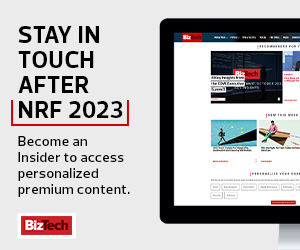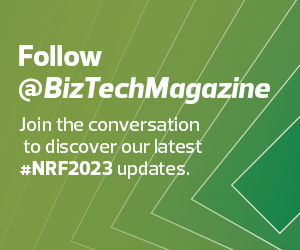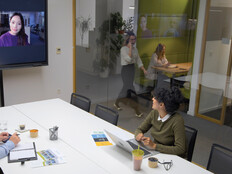Optimizing the Customer Journey Inside the Store
The ideal shopping experience should feel like an immersive journey. It begins with the search for what the customer is looking for, said Dobson, followed by the excitement of discovery and the gratifying decision to purchase. If that “decision to purchase” moment isn’t followed by a satisfying, simple exit from the store, then the retailer has fallen short.
Szanger added, “Retailers can invest in all the interactive technology in the world, like augmented reality and virtual reality, but they can’t neglect point-of-sale.”
Studies show the final in-store moments for any customer are the most important for brand loyalty. “It’s a critical phase they’ll remember,” said Dobson. “Checkout is more than just ringing up a product. It’s about reaffirming the positive impression of the store overall.”
LEARN: How retailers are modernizing the retail checkout experience.
The Tech Solutions That Are Simplifying Checkout
Self-checkout kiosks, mobile point-of-sale machines, computer vision systems and robotic automated store environments are all improving the checkout experience.
Here’s what you need to know:
Mobile Point-of-Sale
Mobile card readers are becoming more popular because they let retailers bring the checkout process directly to the customer. Although restaurants have long used this technology, retail has been slow to adopt. But mobile point-of-sale is a simple way to increase sales and improve customer service.
“If you have a customer in need of help on the floor, a store associate can come over, solve the purchasing decision ring up the customer in that moment,” said Dobson.
Many retailers are also struggling to implement workforce management systems, and with staff shortages, “this is a simple solution that takes the pressure off the checkout line,” he said.
Self-Checkout Kiosks
Self-checkout technology has come a long way over the past few years. “We’re starting to see more computer vision usage in self-checkout instead of traditional reliance on barcodes,” said Dobson. Because scanning barcodes can be tricky for customers, this is a major improvement, he said.
WATCH: Find out how retailers are revolutionizing frictionless checkout.
Computer vision systems allow customers to scan the product on the screen and tap their card to complete the transaction. It’s much more efficient than barcodes, Dobson said. “By increasing the number of self-checkout kiosks, you can also add more checkout lanes and reduces wait times.”
It’s essentially the grocery store checkout model that is widespread now in Europe applied to U.S. retail. In fact, quality management company TRIGO is taking frictionless checkout to the next level. Through a combination of computer vision cameras, artificial intelligence and machine learning software, TRIGO is retrofitting traditional supermarkets into fully autonomous stores.
In an NRF session with Michael Gabay, CEO and co-Founder of TRIGO, and Charles McWeeney, vice president of technology, innovation and strategy for Wakefern Food, the message was that computer vision systems are key to delivering intelligent retail.














